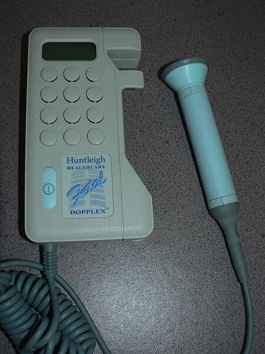
Fetal heart rate (FHR) monitoring using electronic equipment is possibly the most important medical advance in labor and delivery in the past 100 years. First used in the mid-1900s, the technology for electronic fetal monitoring (EFM) has been improved and fine-tuned to the point it is at today.
Purpose of Fetal Heart Rate Monitoring
The process of labor is stressful for the baby, which is subjected to intense forces in the form of the mother’s contractions. There are any number of complications that can arise, including problems with the placenta and problems with the baby’s position, to name a few. These forces and problems can have an effect on the baby’s heart rate, which in turn cause problems for the amount of oxygen-containing blood that is delivered to the baby’s vital organs, including the brain. Deprived of blood and/or oxygen for too long, the baby will suffer permanent mental and physical injuries.
How Does Fetal Heart Rate Monitoring Work?
Of course, there are ways to monitor the fetal heart rate that do not require electronics. Auscultation is an age-old method—it is essentially the process of listening to the fetal heart rate using (usually) a stethoscope. One of the simplest methods is using a doppler, which is an ultrasound transducer that detects the heart beat and creates an auditory simulation.
As used in hospitals, electronic fetal monitoring relies on two main components—a device to monitor the baby’s heart rate, and a device to monitor the mother’s contractions. The fetal heart rate may be recorded with internally or externally. Using the external method, two belts are placed across the mother’s abdomen. One will monitor the contractions, and one, like the Doppler, will record the baby’s heartbeat.
The internal method uses something called a fetal scalp electrode. After the membranes are ruptured and the cervix is dilated to two centimeters, an electrode can be placed on the baby’s head to measure the heartbeat. A small tube is placed next to the baby’s head to record the mother’s contractions.
These devices then create a computer readout (older versions printed them out on fetal monitor strips) which displays in realtime the heart rate next to the contractions. The reason doctors monitor the contractions and the heart rate at the same time is to observe the effect of the contractions on the baby. In response to contractions, the baby’s heartbeat can tell a doctor if the baby is doing well by recovering appropriately, or if the baby is struggling and may need help.
Responding to the Fetal Heart Rate
Doctors and obstetrical nurses must be prepared to respond to problems in the fetal heart rate. Responses might include simple solutions, like turning the mother over onto her left side to encourage oxygenation of the baby, giving her orange juice to stimulate the baby, or providing her with direct oxygen through a mask. Solutions could also include more serious actions, like emergency cesarean section to get the baby out of a dangerous environment. Failure to act properly can cause devastating injuries, or even death.
Contact Us
Electronic fetal monitoring is a tool used to help ensure the health of the baby. When the readings are incorrectly analyzed or not appropriately followed on, the baby can suffer injuries. To find out whether your healthcare providers acted appropriately, contact our medical malpractice attorneys at (440) 252-4399 or online for a free consultation.

